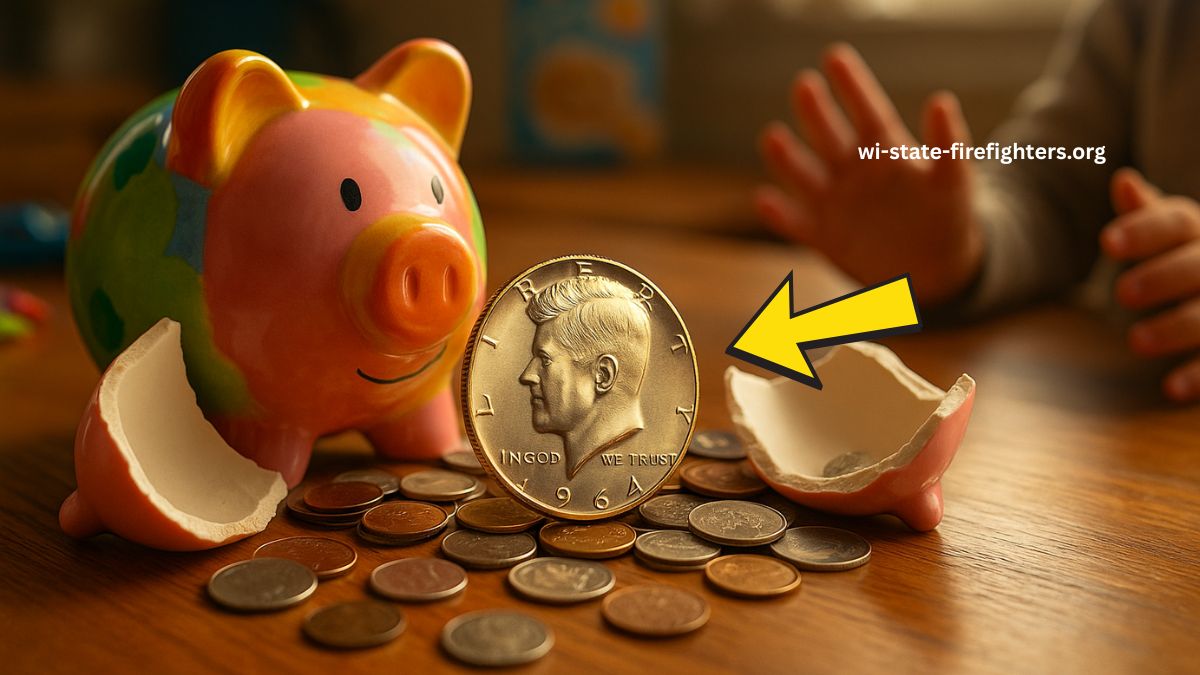In a quiet Ohio neighborhood, a routine afternoon turned extraordinary when nine-year-old Ellie Parker and her mother, Rachel, decided to clean out Ellie’s piggy bank.
Among the assortment of coins, they stumbled upon a 1971 Kennedy half-dollar that appeared unusually shiny and heavier than the others. This serendipitous discovery has since captivated coin collectors and historians alike.
The Discovery: A Coin That Shouldn’t Exist
The coin in question stood out due to its silvery sheen, distinct finish, and unusual weight. Intrigued, Rachel consulted a local coin dealer, who recognized the coin’s potential significance.
Further examinations by experts revealed that the coin was struck on a 40% silver planchet, a composition the U.S. Mint had discontinued after 1970. This anomaly suggests the coin is a transitional error, making it an exceptionally rare find.
Understanding Transitional Errors
Transitional errors occur when a coin is struck using materials or designs from a previous minting period.
In this case, the 1971 Kennedy half-dollar was minted on a silver planchet intended for 1970 coins. Such errors are exceedingly rare and highly sought after by collectors.
Historical Context: The Kennedy Half-Dollar
The Kennedy half-dollar was first minted in 1964, shortly after President John F. Kennedy’s assassination. Initially composed of 90% silver, the coin’s silver content was reduced to 40% in 1965 due to rising silver prices.
By 1971, the U.S. Mint transitioned to a copper-nickel clad composition, eliminating silver entirely from the coin’s makeup. Therefore, a 1971 half-dollar struck on a silver planchet is an extraordinary anomaly.
Coin Specifications Comparison
| Year | Composition | Weight | Remarks |
|---|---|---|---|
| 1964 | 90% Silver | 12.5 g | First year of issue |
| 1965-1970 | 40% Silver | 11.5 g | Reduced silver content |
| 1971 | Copper-Nickel Clad | 11.34 g | Standard composition post-1970 |
| 1971* | 40% Silver (Error) | 11.5 g | Rare transitional error |
*The 1971 silver composition is an error and not standard for that year.
Potential Value: A Numismatic Treasure
While the exact value of Ellie’s coin is yet to be determined, similar transitional error coins have fetched significant sums at auctions.
Given its rarity and historical significance, experts estimate the coin could be worth hundreds of thousands or even over a million dollars.
The Broader Impact: Renewed Interest in Coin Collecting
This discovery has reignited interest in coin collecting, highlighting the potential for rare finds in everyday places. It serves as a reminder that valuable treasures can be hidden in plain sight, waiting to be discovered.
Ellie Parker’s accidental discovery of a rare 1971 Kennedy half-dollar serves as a fascinating reminder of the hidden treasures that can exist in the most unexpected places.
This numismatic marvel not only holds significant monetary value but also offers a unique glimpse into a pivotal moment in U.S. minting history.
FAQs
What makes the 1971 Kennedy half-dollar found by Ellie so rare?
It’s a transitional error coin struck on a 40% silver planchet, which was discontinued after 1970. Such errors are extremely rare.
How can I determine if I have a similar rare coin?
Look for coins with unusual weight, color, or finish. Consulting a professional coin appraiser or numismatist is recommended for accurate identification.
Does this discovery affect the value of other Kennedy half-dollars?
While standard Kennedy half-dollars have modest value, this discovery may increase interest in the series, potentially raising values for certain rare variants.

